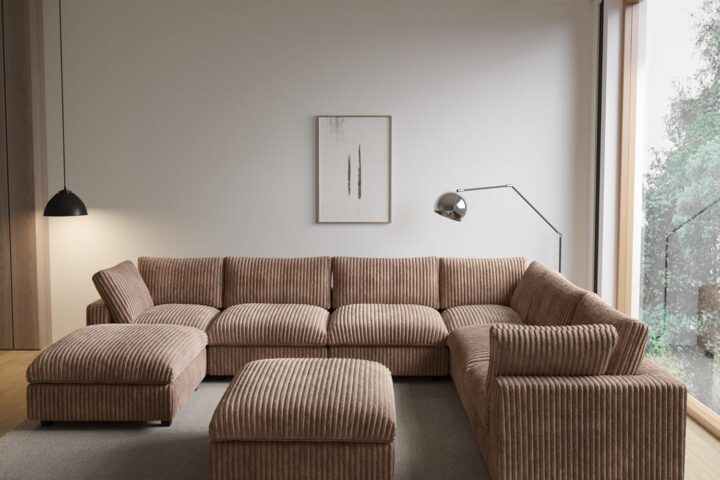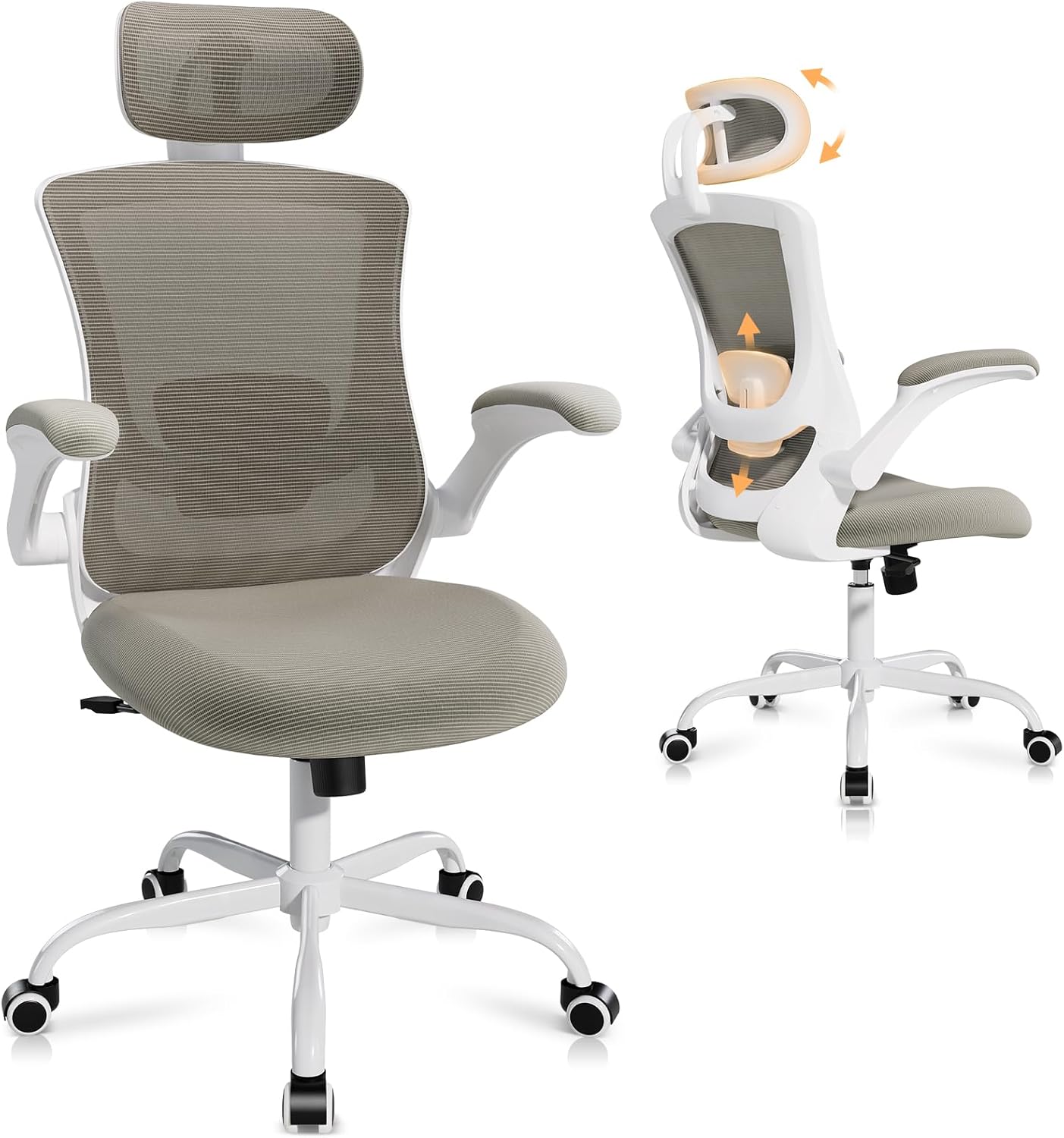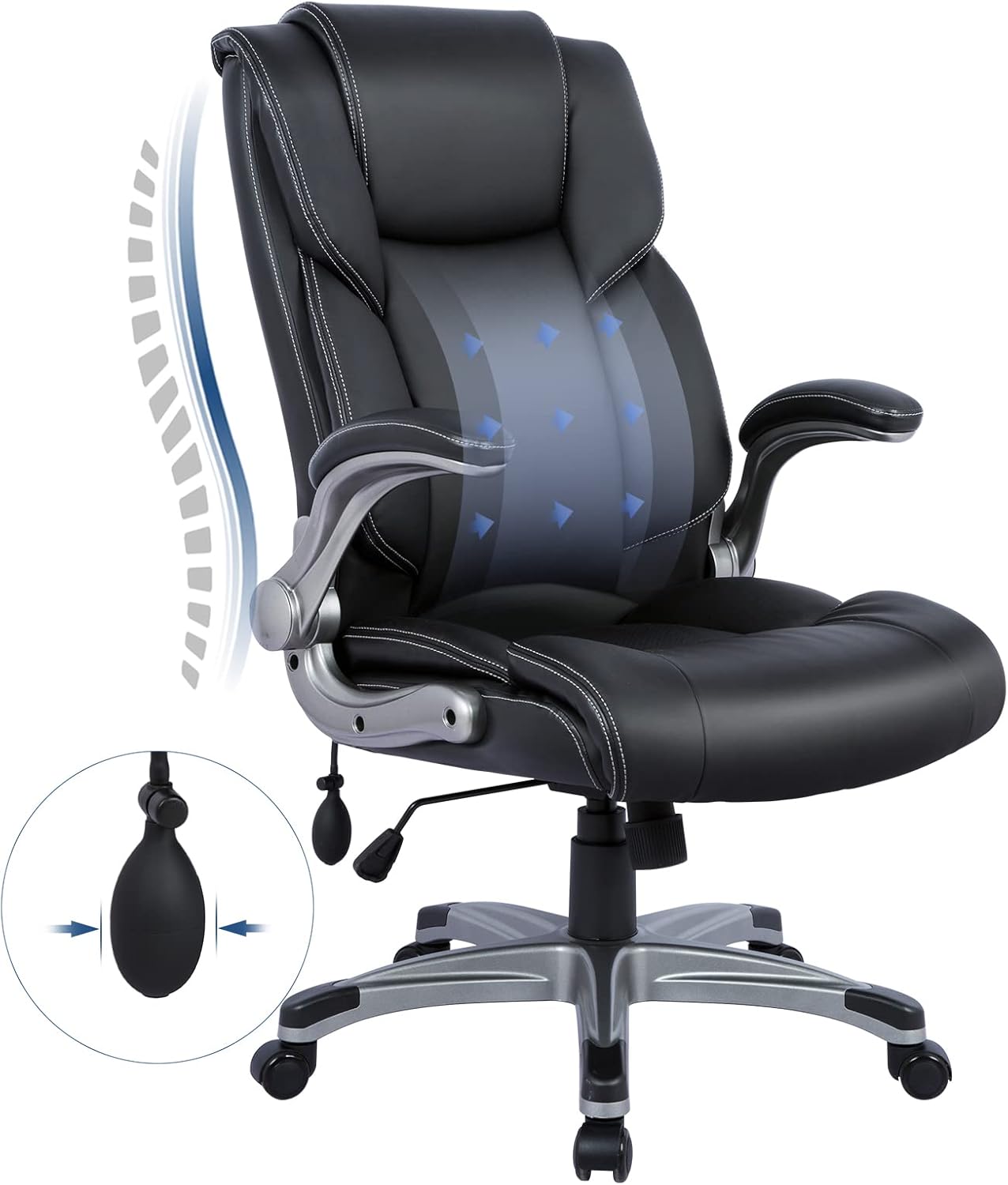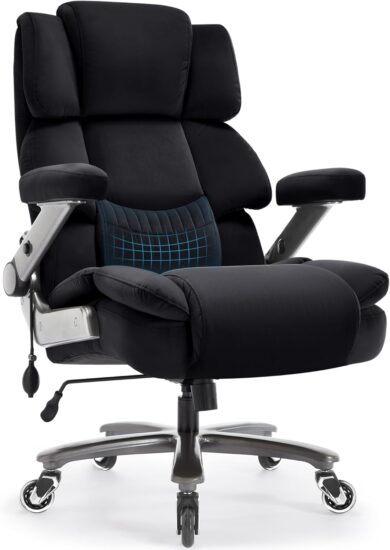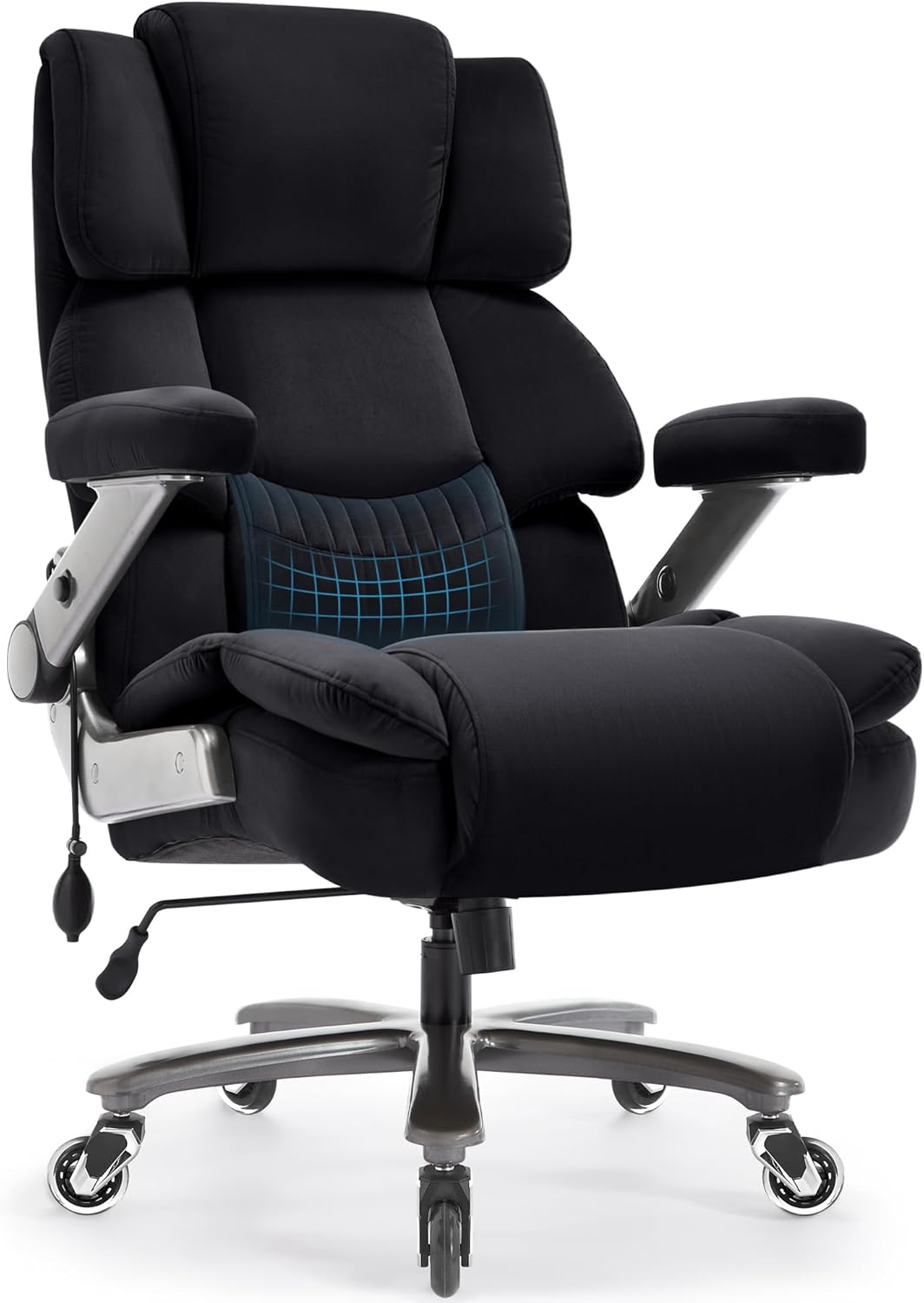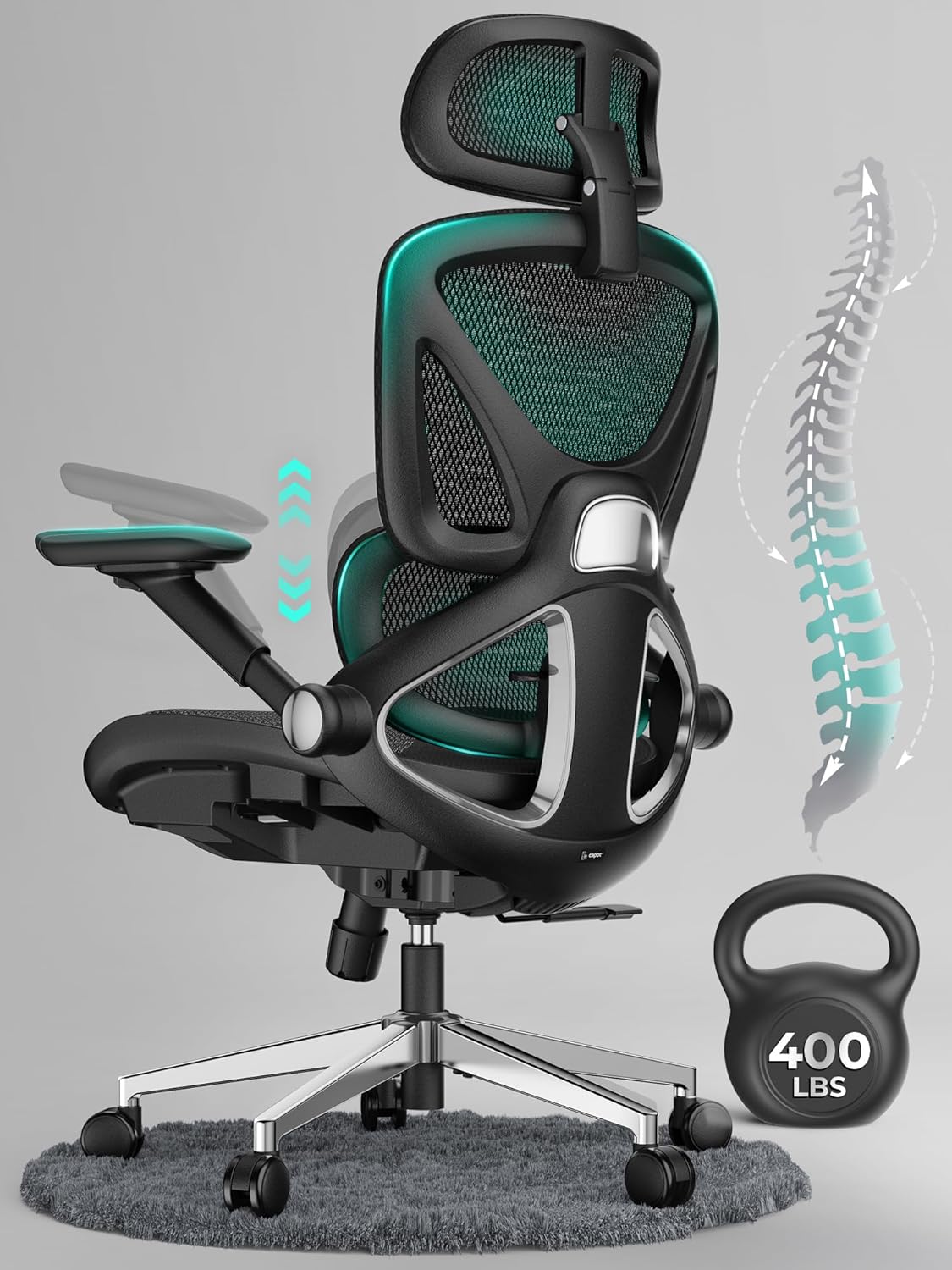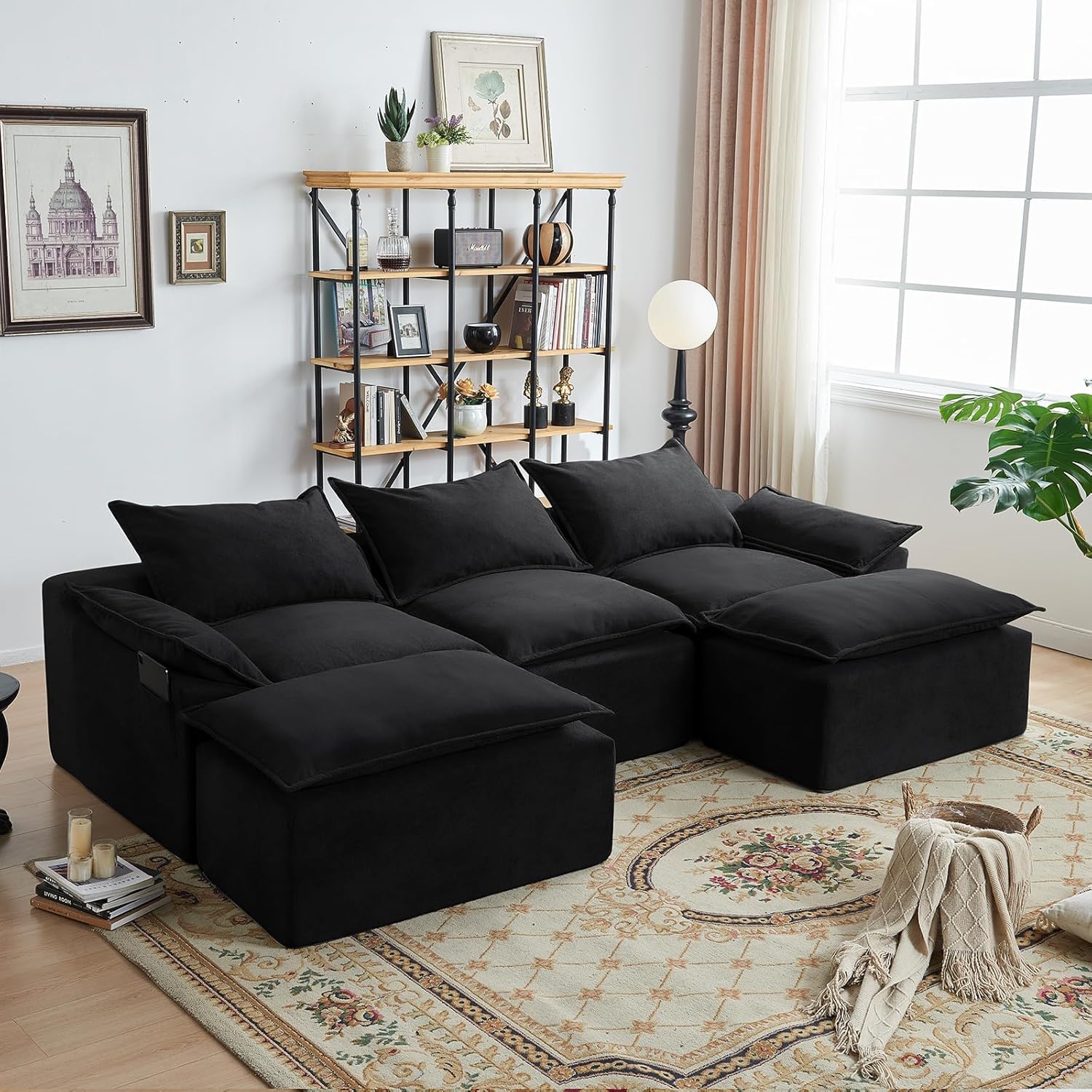Choosing a desk chair with proper back support can make a big difference in how you feel after a long workday. A good chair should support the natural curve of your spine, especially in the lower back. Look for lumbar support that keeps your posture in check without forcing you to sit stiffly. Adjustable features—like seat height, tilt, and armrests—let you fine-tune the chair to your body, which is especially important if you’re sitting for hours at a time. Mesh or breathable fabric helps with airflow, while firm but comfortable cushioning keeps your body supported without sinking in. Pay attention to how the chair encourages posture, not just how it feels for the first five minutes. A well-designed chair can help reduce strain, prevent backaches, and improve your overall comfort. It’s not just about sitting—it’s about sitting in a way that supports your body long-term.
4 Best Work Chairs for Posture
(1) Mimoglad Office Chair, Ergonomic Desk Chair with Adjustable Lumbar Support
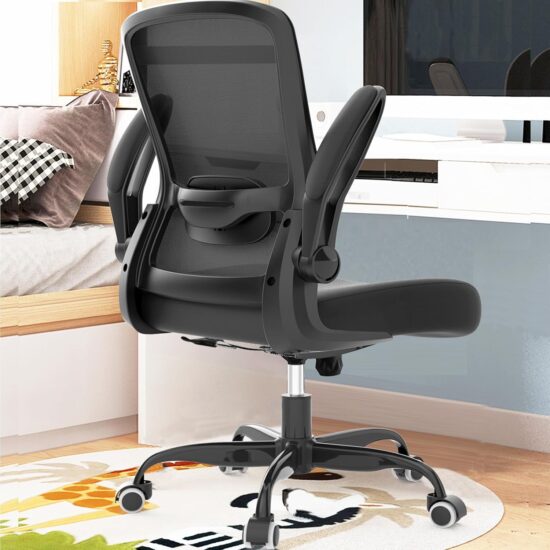
“You can seat long time and don’t get tired.” – katie yabarra
Putting the chair together was quick and straightforward—everything lined up without any issues. It’s surprisingly comfortable and gives me the support I need during long hours at my desk. I really like how the lumbar area feels; my back doesn’t ache at the end of the day anymore. The adjustable arms and seat height help me switch things up depending on what I’m working on, and the seat cushion is soft without being too squishy. The mesh back is a smart touch, especially with warmer weather coming up. I also appreciate how the arms flip up so I can slide it under the desk when not in use. The gold color is a fun pop that still works well with my neutral-toned home office. The backrest can move up and down too, which is great for getting a more customized fit. All around, I’ve been happy with how it works and looks.
(2) Reclining Massage Office Chair with Heat and Foot Rest
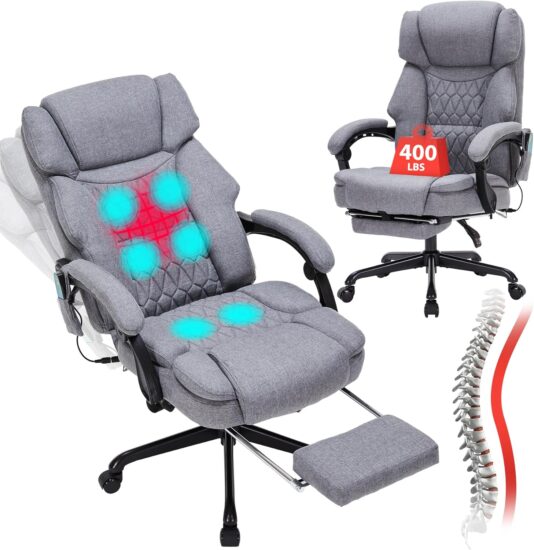
” I normally sit cross legged and it’s really nice having the foot rest to allow me to sit comfortably. I like how much padding is on the seat “ – becky
Working remotely means I’m in my chair for hours every single day, and my old one just wasn’t cutting it—my back and legs were constantly sore. After some digging, I found this office chair on Amazon, and for the price, it really delivers. It’s way more comfortable than I expected, and the built-in massage function is surprisingly effective. It runs quietly, provides just enough pressure to ease the tension in my lower back, and the heat feature has been a nice touch, especially on cooler mornings. It actually makes those long days a lot more manageable. Putting it together was a simple task—I handled it on my own without any hassle. The cushioning feels supportive, and the overall build seems solid so far. I wasn’t sure what to expect at first, but it’s been a great addition to my home office. Definitely made workdays feel less tiring.
(3) Chair with Adjustable Lumbar Support 3D Arms and Headrest
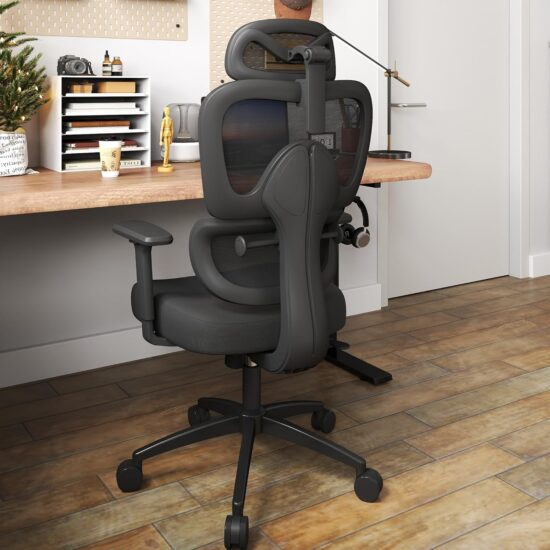
“This is an outstanding chair with tons of features for the money. Great lumbar support” – elizabeth
I’ve gone through my fair share of office chairs, and finding one that actually supports my back has always been a struggle. This one really surprised me—in a good way. The armrests adjust easily, and the backrest is tall enough to support my entire back, which is rare. The lumbar support can be moved to fit just right, and it’s made a noticeable difference during long workdays. The seat is wide and firm without being uncomfortable, so I don’t find myself constantly shifting around. It also rolls smoothly over my hardwood floors, which is a small thing but makes a big difference in day-to-day use. The look is clean and modern, and the build feels solid and dependable. Assembly was quick and straightforward—I had it up and ready in no time. For the price, I really wasn’t expecting this level of comfort or quality, but I’m glad I gave it a shot.
(4) High Back Executive Office Chair with Padded Flip-up Arms
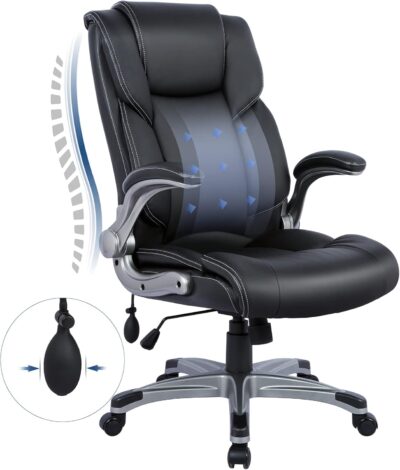
This new chair has made a noticeable difference in my workday comfort. Right out of the box, it felt sturdy and well-built. The lumbar support is solid even without adjustments, but I really like the pump-ball feature—it lets me fine-tune the firmness to suit my back, which is a big plus. The chair came a few days earlier than expected and was in perfect shape. Assembly wasn’t too bad overall. I did most of it solo in about 25 minutes, though attaching the backrest is definitely easier with two people. The instructions take a bit of patience, especially when the orientation gets confusing—what’s left or right flips once the chair is upside down. But once it was all together, I was impressed. It’s supportive, comfortable, and doesn’t break the bank. If you’re not looking to shell out $500 for a high-end name, this chair holds up really well without compromising on comfort.
How Should You Choose Office Chairs with Good Back Support?
Spending eight or more hours a day in front of a computer makes one thing incredibly clear: your chair matters more than you think. A few years back, I didn’t pay much attention to what I was sitting on. I used whatever was around—a dining chair, an old gaming chair, even a secondhand office seat from a garage sale. Eventually, my lower back started complaining. A dull ache would creep in by mid-afternoon, and my arms would sometimes feel strained from resting awkwardly on fixed-height armrests. That’s when I realized it wasn’t about how fancy the chair looked—it was about what it did for my body.
So I went on a mission to find a work chair that genuinely supports my back and doesn’t neglect my arms. After testing a few and reading far too many reviews, I learned what really makes a chair worth investing in.
First, back support. You want a chair that doesn’t just have a backrest, but one that actively supports the natural curve of your spine. Lumbar support isn’t optional—it’s essential. I personally found chairs with adjustable lumbar support far better than ones with built-in fixed curves. The one I settled on had a pump system to adjust the firmness of the lumbar pad. Sounds small, but being able to fine-tune that pressure made a big difference after hours of sitting. My lower back stopped aching. That alone was worth the switch.
Next, arm support. You don’t really think about your arms until they start to feel sore or tense, especially if you type a lot like I do. Fixed armrests were a problem for me. They either sat too low or were angled wrong. I needed ones that could adjust up and down, slide forward and back, and preferably pivot a little. Having that level of adjustability helped keep my shoulders relaxed and stopped the wrist fatigue that would build up during long typing sessions.
The chair I ended up with wasn’t a $1,000 ergonomic marvel—but it was thoughtfully designed. It had a breathable mesh back, which kept me cool during the summer months, a firm but supportive seat cushion, and all the adjustment points I needed. It rolled quietly across my hardwood floor, and the armrests were padded just enough to be comfortable without getting in the way. Best of all, I didn’t dread sitting in it.
If you’re hunting for a chair, don’t just focus on the hype or the brand name. Sit in it if you can. Think about your height, your posture habits, the way your arms fall when typing. A chair that fits your body will make work feel less like a grind and more like something you can do without pain—and for me, that changed everything.
